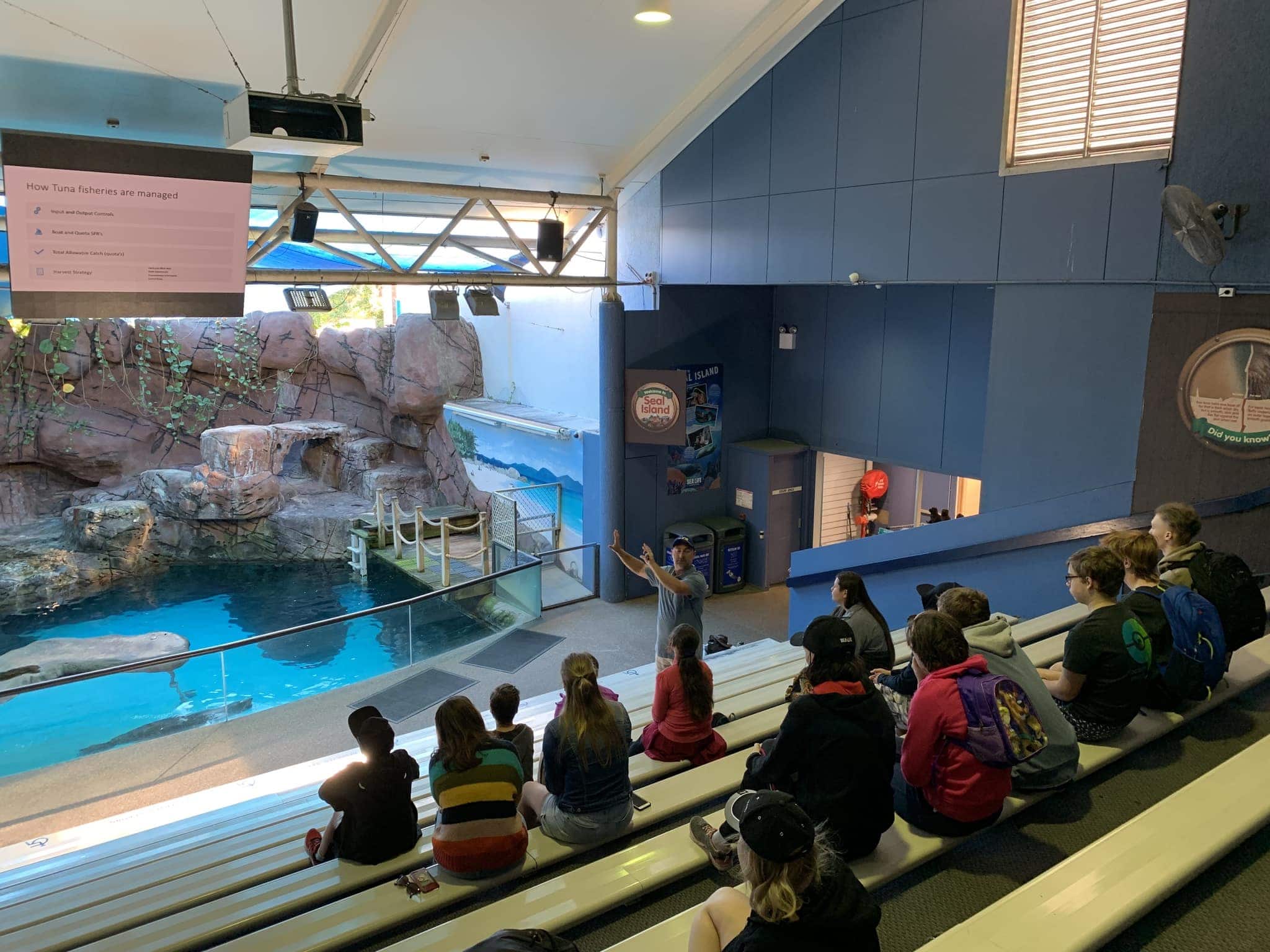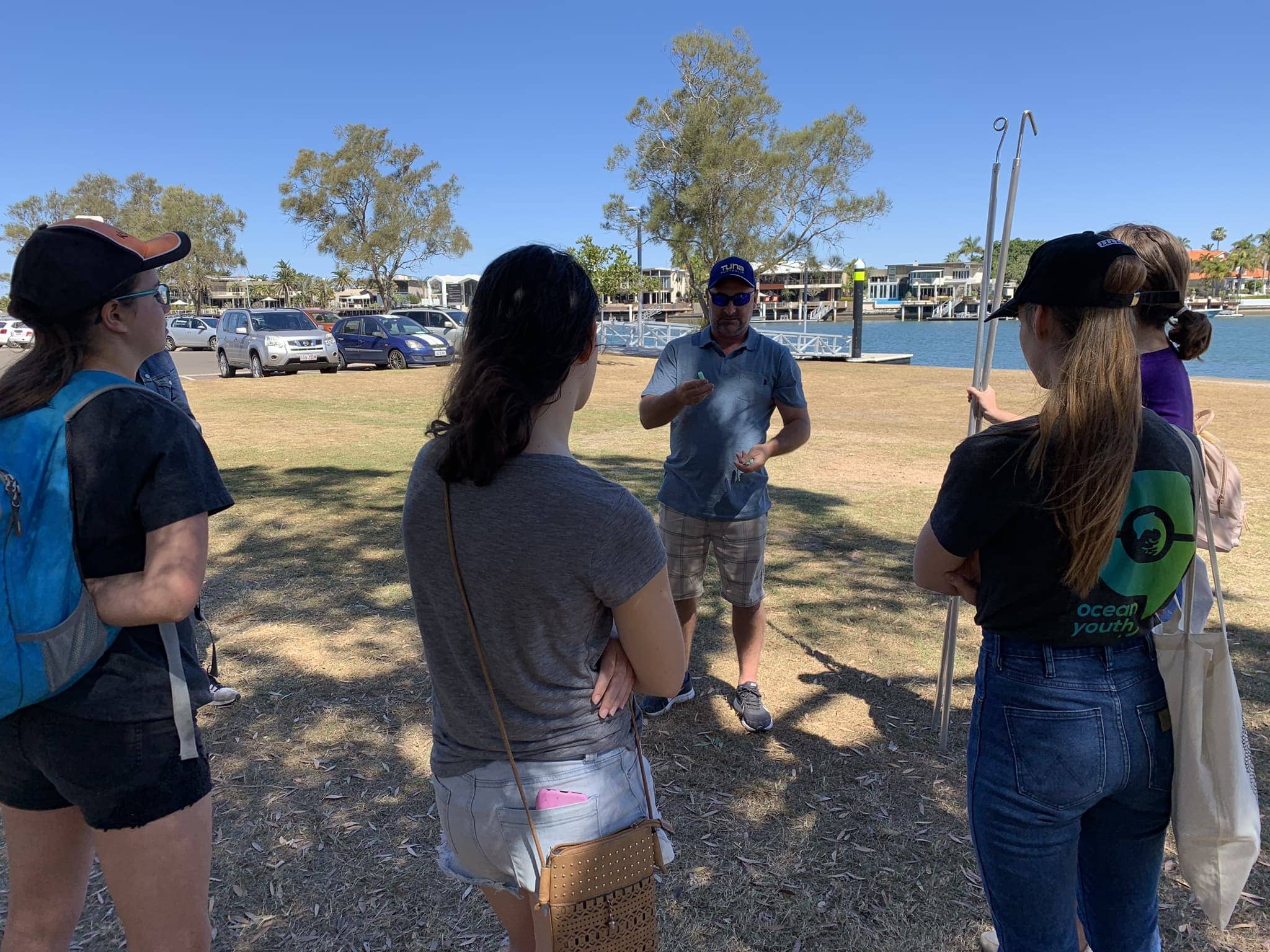‘It’s really cool’: Queensland youth learn of Tuna Australia’s conservation work
Two groups of high school students from across South East Queensland have had their eyes opened to Tuna Australia’s work to conserve and protect tuna fisheries across Australia.
Program Manager Phil Ravanello recently spoke with 30 students, aged between 13 and 18 years, on the practices, regulations and measures to ensure sustainable tuna fisheries.
“I was asked a lot of questions about the sustainability of tuna fishing, which tells me they were really engaged with the material,” Phil said of the students, hailing from the Gold Coast, Brisbane, the Sunshine Coast and Hervey Bay.
“It’s great to see so many young people enthusiastic about the ocean and its future.”
Phil’s talks were part of the SEA LIFE Trust’s Ocean Youth workshop on sustainable fishing held on Sunday 8 September at SEA LIFE Sunshine Coast Aquarium.
Specifically, Phil discussed the science behind managing tuna fisheries and how the quota system and stock status ensures the sustainability of target species. He described the pelagic longline fishing technique, and how ecological risk assessments guide the fishery to avoid and minimise interactions with threatened, endangered and protected species.

Tuna Australia Program Manager Phil Ravanello speaking with Ocean Youth students. Photo by Lidia Davidovics Smith.
New insights
The participating students, who are engaged in SEA LIFE Trust’s Ocean Youth program and have a passion for conservation and sustainability, learned much from Phil’s talks.
“I had no idea fishing had this much of an impact on the environment; that so many species were being affected,” said Lucy Ruigrock, 15, referring to by-catch and the unintended animal interactions.
“It’s really cool how they [Tuna Australia] are doing so much to promote helping all those species.”
Morgan Williams, 16, said she didn’t realise things were actually being done to help the environment.
“I thought it was all doom and gloom. It’s good to know that something is being done to help,” she said.
Besides his talks, Phil led two interactive sessions in the local park where the students got to view and handle circle hooks, weighted swivels, tori line materials, line cutters and de-hookers.
Career choices in the fishing industry were also discussed, and pathways of study highlighted for interested students.

Phil leading an interactive session in the local park. Photo by Lidia Davidovics Smith.
Reaching out
The workshop was just one of the many activities delivered each year through the Ocean Youth program run by the SEA LIFE Trust, the not-for-profit arm of SEA LIFE Sunshine Coast.
“Ocean Youth is now in its fourth year of educating and inspiring young people to conserve and protect our oceans, and this year’s group is more energized than ever,” explained Claudette Rechtorik, General Manager, SEA LIFE Trust.
“Our aim is to give these people the skills they need to become tomorrow’s leaders in ocean sustainability.”
Phil says that engaging with school students and other community groups is important for the tuna industry.
“We have a good story to tell about sustainable fishing practices and how we minimise our impact on the environment,” he said.